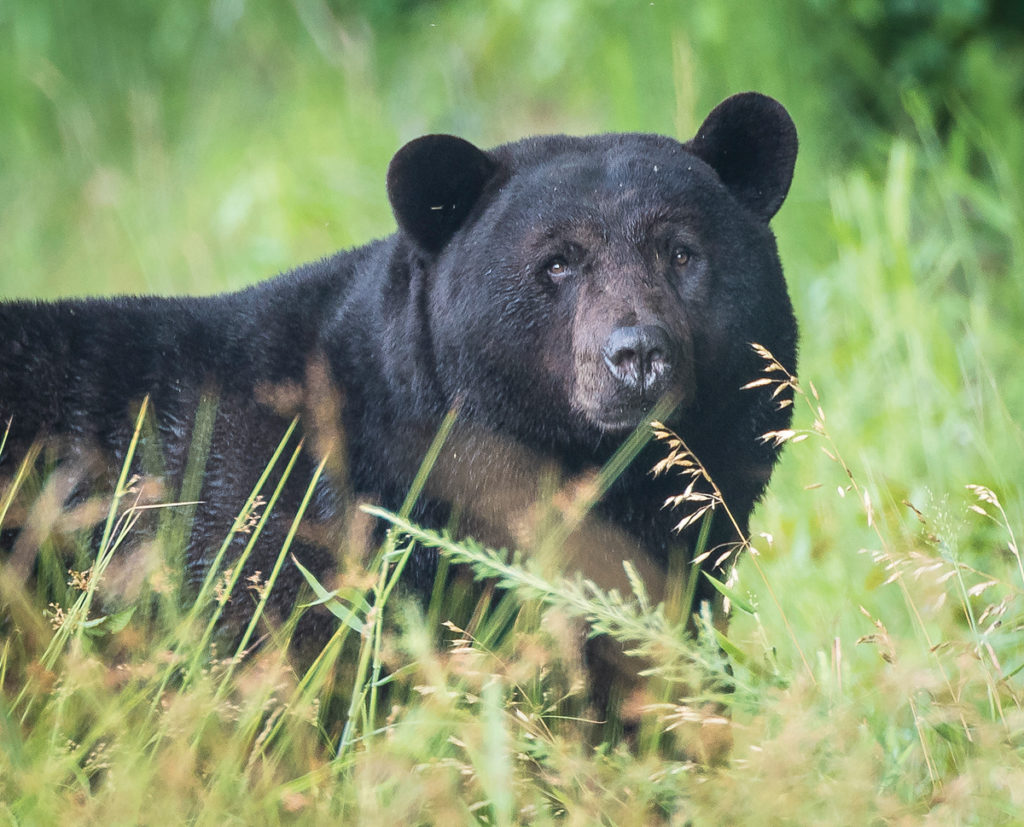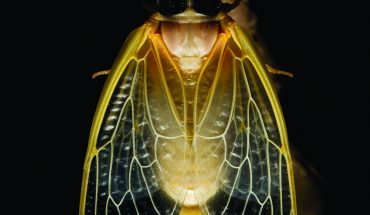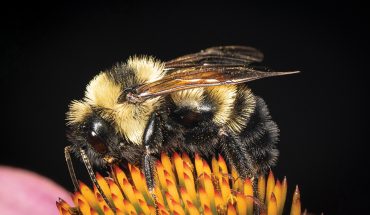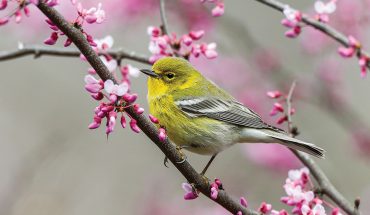While most consider the mountains the place to find black bears, our nature writer has had remarkable encounters with them along the coast.
Words and photographs by Mike Dunn
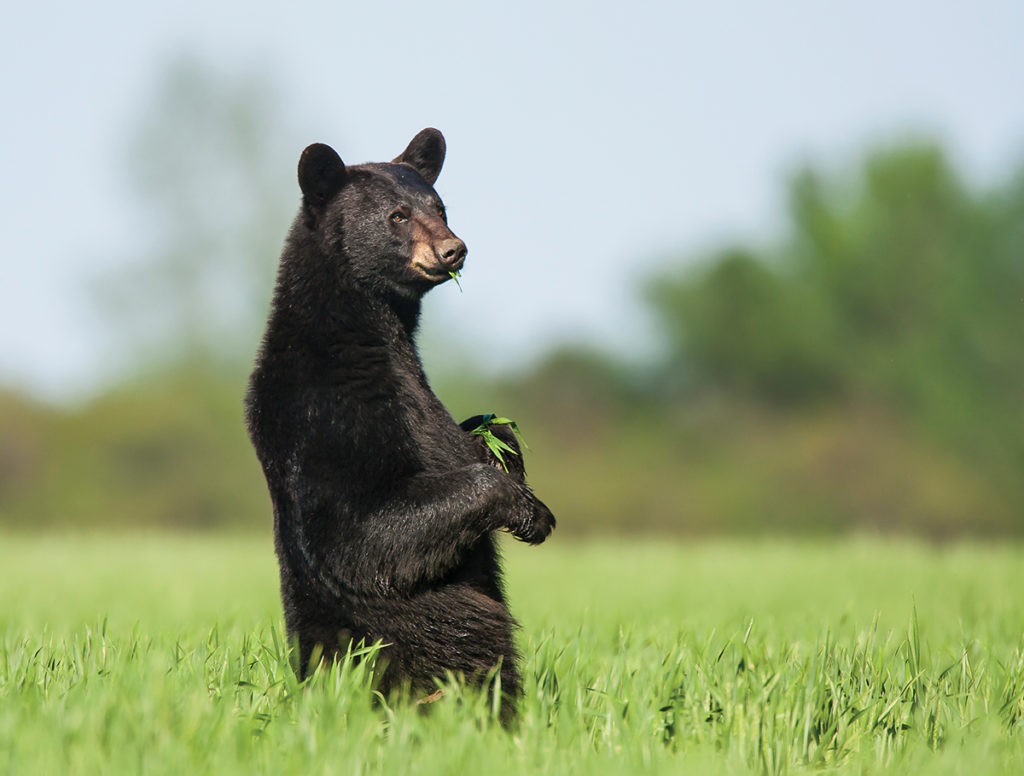
I remember seeing my first bear when I was a kid. My parents took me to Great Smoky Mountains National Park and a bear ran across the road in front of our car. I was so excited — a bear in the wild! That sighting inspired me to learn more about these charismatic mammals.
For the next couple of decades, I saw only the occasional bear, usually while vacationing in the mountains. Then, I started working for the North Carolina State Parks System in 1981. A ranger at Pettigrew State Park suggested I visit the nearby Pungo National Wildlife Refuge (NWR) on my next vacation to see the wintering waterfowl.
On my first trip to the refuge, my friend and I walked down a gated gravel road to the sounds of tundra swans and snow geese on Pungo Lake, just beyond a tract of forest that bordered the road. We took a side trail that went out to the lake. My friend stopped to look at some tracks while I continued down the path to the water.
As I approached, I saw the top of a sapling shaking back and forth. I eased around to see what was causing it and was amazed to see a black bear scratching her back by rubbing against the trunk of the tree. There was a young bear next to her, probably a year-old cub judging by its size. I took a few photos and waited for my friend. By the time he got there, the bears had walked off into the brush. When I told him what he’d missed, he replied that I’d missed something too: a bobcat sitting near where he entered the woods. What an incredible place!
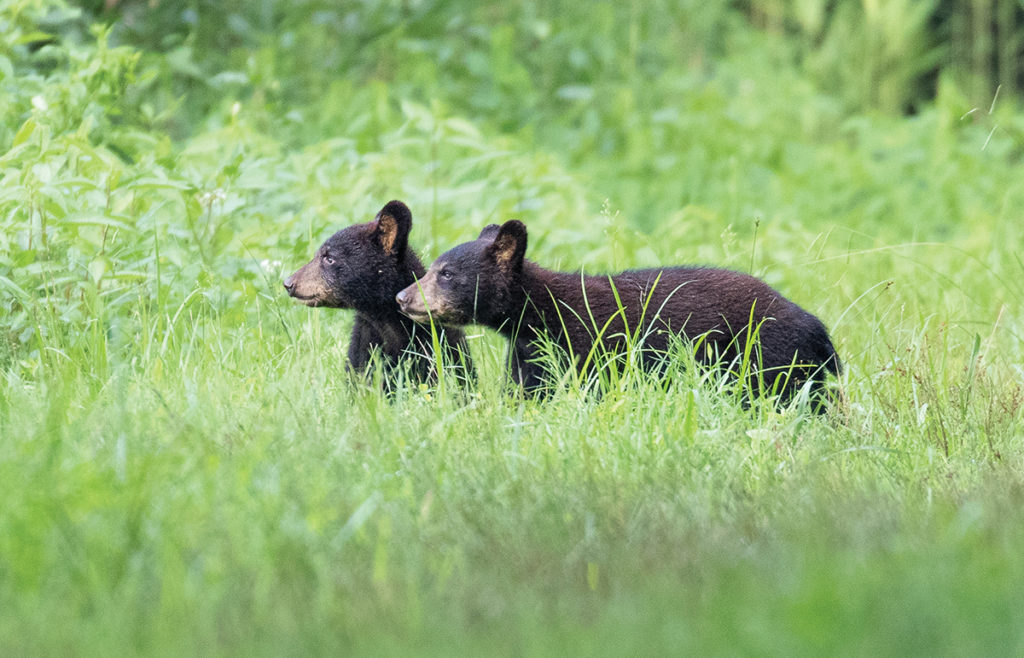
That visit started what has been a 40- year love affair with the public lands of our state’s wild and wonderful Coastal Plain. Since then, I have traveled to this refuge, now called Pocosin Lakes NWR, and nearby Mattamuskeet and Alligator River NWRs hundreds of times in all seasons. The Pungo area has one of the highest densities of black bears — the only species of bear in the Eastern United States — in North America.
The total number of bears in Eastern North Carolina is believed to be around 10,000, compared to an estimated mountain population of about 6,000 bears. The world-record black bear was found in Craven County and weighed 880 pounds! Their large size, and my winter sightings, are due to the mild climate and ready availability of food year-round. These bears typically don’t hibernate long, if at all, and continue feeding through much of the winter.
On a hot August afternoon a few years ago, we came across a huge male sitting in the water of one of the roadside canals at Alligator River NWR. He just sat there, soaking it all in, eyes half shut, like you or I might do on a sultry summer day. Eventually, he opened his eyes, climbed the steep bank and ambled across the field to get a snack.
One reason I like bears so much is that their behavior can seem so similar to ours. This is particularly true when they’re standing. Bears have an incredible sense of smell but somewhat limited vision, so a bear will rise to get a better view of its surroundings and lift its nose to catch the scent of an unknown object.
One year, when we were helping lead bear tours during the North Carolina Black Bear Festival in Plymouth, I was showing people a young bear walking through a farm field in our general direction. It angled off a bit toward the roadside canal, and when it got to the water, it stood up and walked across.
Another winter, I stood in awe at thousands of snow geese swirling into a field of corn stubble to feed. From a distance I saw them leap into the air, circle and settle back down several times. As I approached, I could see why: A young black bear was running out into the field from a nearby line of trees and spooking the birds, and then running back to the forest. The bear did this a few times, and the birds simply flew over it to land again and feed. I still wonder if it was playing or trying to grab a feathered snack.
One day as I drove down a dusty refuge road, I passed a single tree by a roadside canal. To my surprise, there was a bear lounging on a limb, just barely out of sight of the several cars that had already driven by. I stopped, poked the camera out the window and took a few photos. The bear started chewing on the tree, and I realized it was making a more comfortable spot to lay on the big limb by getting rid of a branch poking its side. After a few minutes, the annoying branch was gone, and the bear fell asleep.
The only thing better than a sleeping bear in a tree is a cub in a tree. One day, several of us visited the Pungo Unit and were walking down a road talking when an adult bear startled us by sliding down a nearby pine. It was like a fireman sliding down a firehouse pole, except it made a lot more noise. The bear ran off into the woods, and as we recovered our wits, we saw two cubs sitting high up on one of the larger branches. They looked around, yawned and got comfortable, as mom had undoubtedly signaled for them to stay put. We opted to move along after a couple of quick photos so she could come back and be with her babies.
I always enjoy seeing cubs — they’re so playful and cute. This summer I happened upon a mother bear with three cubs hanging out on a huge dirt pile at the edge of a field. One cub was pawing at the tolerant mother bear while the other two were having a wrestling match in the dirt, just like kids in a sandbox.
I sat down to watch and photograph them for several minutes before they climbed down off the dirt playground and headed into the woods. As usual, I used a telephoto lens and kept my distance so as not to influence their behavior. Though they will generally run from people, bears are wild animals that should be treated with respect.
Want to see bears in the wild? Head down to either Pocosin Lakes NWR or Alligator River NWR, especially early or late in the day, and cruise the roads. Keep an eye on the fields or down the road in front of you, and don’t forget to look up in the trees as well. Alligator River also offers tram tours for viewing wildlife, including bears, throughout the summer and fall. Visit fws.gov/refuge/alligator-river for more information.
This article originally appeared in the September 2022 issue of WALTER Magazine.

